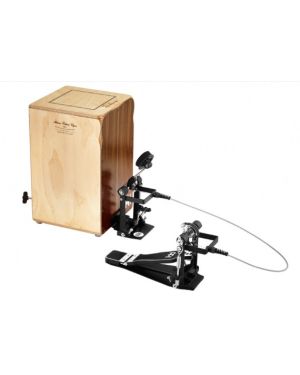
-
 In Stock
In Stock -
 Pre-Order
Pre-Order -
 In Stock
In Stock -
 In Stock
In Stock -
 In Stock
In Stock -
 Pre-Order
Pre-Order -
 Pre-Order
Pre-Order -
 In Stock
In Stock -
 Pre-Order
Pre-Order -
 Pre-Order
Pre-Order -
 Pre-Order
Pre-Order -
 Pre-Order
Pre-Order -
 Pre-Order
Pre-Order -
 In Stock
In Stock -
 Pre-Order
Pre-Order -
 Pre-Order
Pre-Order -
 Pre-Order
Pre-Order -
 Pre-Order
Pre-Order -
 Pre-Order
Pre-Order -
 Pre-Order
Pre-Order -
 Pre-Order
Pre-Order -
 Pre-Order
Pre-Order -
 Pre-Order
Pre-Order -
 Pre-Order
Pre-Order
What should I look for when buying a cajon?
When buying a cajon, consider the materials used for the front plate (tapa) and the body, as they significantly affect the sound quality. Plywood or hardwood tapas offer a bright, crisp sound, while softer woods provide a warmer tone. Also, look for adjustable snare systems, which allow you to customise the snare response, and ensure the cajon is well-constructed with solid joints for durability. Trying out different models to see which sound and feel best suit your playing style is also a good idea.
How do I play a cajon properly?
To play a cajon properly, sit on the top of the drum with your feet flat on the ground. Use your hands to strike the front plate, producing different sounds by hitting various areas. The center of the tapa typically produces bass tones, while striking near the edges creates higher-pitched snare sounds. Basic techniques include the bass tone, slap, and tip, which can be combined to create rhythmic patterns. Practising these techniques will help you develop a versatile playing style.
How do I maintain and care for my cajon?
To maintain and care for your cajon, keep it in a dry, moderate-temperature environment to prevent the wood from warping or cracking. Clean the surface regularly with a dry or slightly damp cloth, avoiding harsh chemicals that can damage the wood. Periodically check and tighten any screws or bolts, especially those on the snare system, to ensure optimal sound quality. If your cajon has a varnished finish, using a wood polish can help maintain its appearance.
